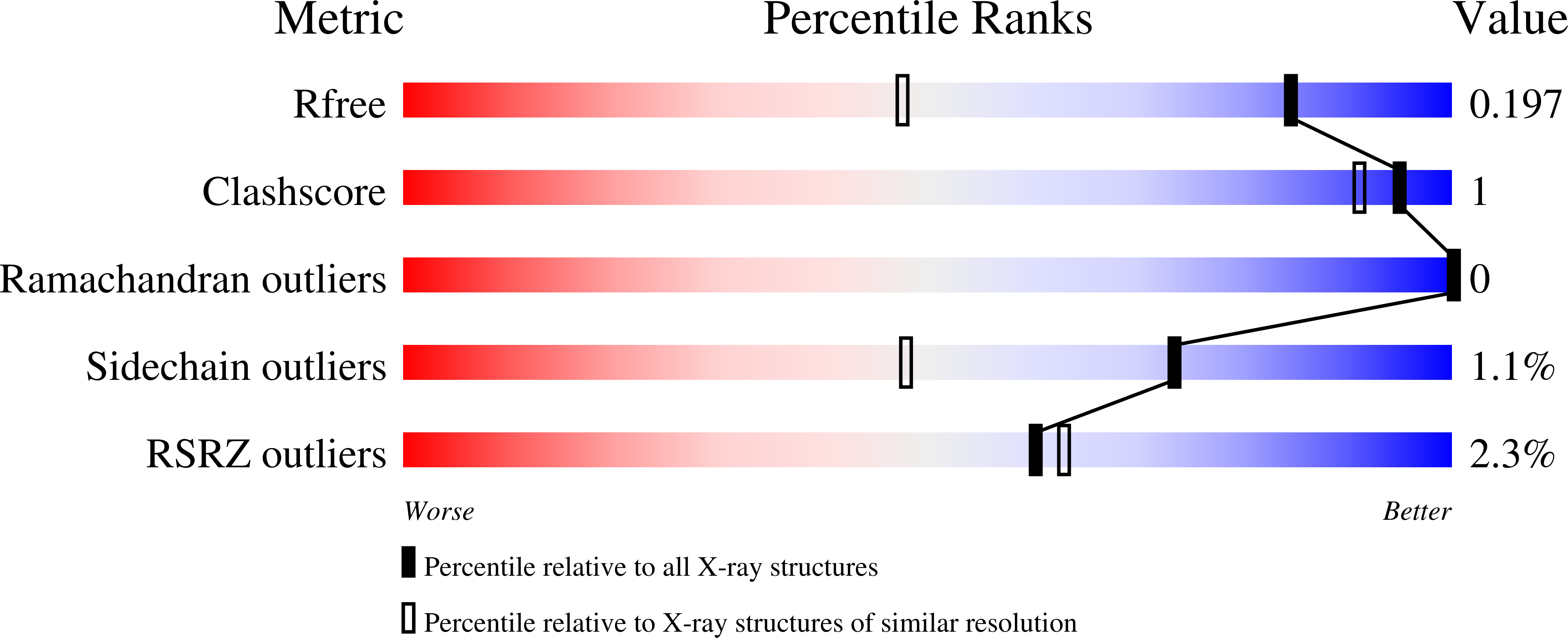
Deposition Date
2022-07-27
Release Date
2023-03-15
Last Version Date
2023-10-25
Entry Detail
PDB ID:
8DUF
Keywords:
Title:
Crystal structure of Venezuelan Equine Encephalitis alphavirus (VEEV) nonstructural protein 2 (nsp2) (K741A/K767A) protease domain
Biological Source:
Source Organism:
Venezuelan equine encephalitis virus (Taxon ID: 11036)
Host Organism:
Method Details:
Experimental Method:
Resolution:
1.46 Å
R-Value Free:
0.19
R-Value Work:
0.15
R-Value Observed:
0.15
Space Group:
P 21 21 21


